My
List |
Addition Date
|
Target
|
Mission
|
Instrument
|
Size
|

|
1999-05-21 |
Neptune
|
Hubble Space Telescope
|
WFPC2
|
720x730x3 |

|
-
PIA01542:
-
Neptune's Stormy Disposition
Full Resolution:
TIFF
(610.8 kB)
JPEG
(37.55 kB)
|

|
1999-05-08 |
Neptune
|
Voyager
|
|
1479x1159x3 |
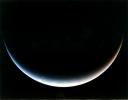
|
-
PIA01539:
-
Post-encounter View of Neptune's South Pole
Full Resolution:
TIFF
(1.882 MB)
JPEG
(70.53 kB)
|

|
1999-05-08 |
Triton
|
Voyager
|
|
1934x2292x3 |

|
-
PIA01536:
-
Detail of Triton's Surface
Full Resolution:
TIFF
(10.02 MB)
JPEG
(380.9 kB)
|

|
1999-05-08 |
Triton
|
Voyager
|
|
1885x1903x1 |

|
-
PIA01538:
-
Complex Geologic History of Triton
Full Resolution:
TIFF
(3.591 MB)
JPEG
(462.5 kB)
|

|
1999-05-08 |
Triton
|
Voyager
|
|
1894x1854x1 |
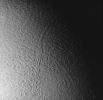
|
-
PIA01537:
-
Triton Faults
Full Resolution:
TIFF
(3.078 MB)
JPEG
(436.3 kB)
|

|
1999-05-03 |
|
|
|
2000x2445x3 |

|
-
PIA01341:
-
Solar System Montage (Updated)
Full Resolution:
TIFF
(4.618 MB)
JPEG
(206.1 kB)
|

|
1998-10-30 |
Neptune
|
Voyager
|
|
1469x1160x1 |

|
-
PIA01493:
-
Neptune's Rings
Full Resolution:
TIFF
(369.4 kB)
JPEG
(144.6 kB)
|

|
1998-10-30 |
Neptune
|
Voyager
|
|
2188x2185x3 |
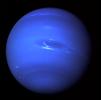
|
-
PIA01492:
-
Neptune Full Disk View
Full Resolution:
TIFF
(8.758 MB)
JPEG
(259 kB)
|

|
1998-10-30 |
Neptune
|
Voyager
|
|
2073x2678x3 |

|
-
PIA01491:
-
Neptune and Triton
Full Resolution:
TIFF
(3.424 MB)
JPEG
(287.1 kB)
|

|
1998-08-02 |
Neptune
|
Hubble Space Telescope
|
WFPC2
|
510x259x3 |
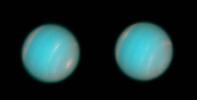
|
-
PIA01287:
-
Hubble Space Telescope Wide Field Planetary Camera 2 Observations of Neptune
Full Resolution:
TIFF
(103 kB)
JPEG
(7.186 kB)
|

|
1998-08-02 |
Neptune
|
Hubble Space Telescope
|
WFPC2
|
800x450x1 |
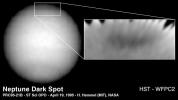
|
-
PIA01286:
-
Hubble Finds New Dark Spot on Neptune
Full Resolution:
TIFF
(140 kB)
JPEG
(26.2 kB)
|

|
1998-08-02 |
Neptune
|
Hubble Space Telescope
|
WFPC2
|
800x500x3 |
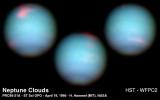
|
-
PIA01285:
-
Hubble's View of Neptune
Full Resolution:
TIFF
(625.7 kB)
JPEG
(25.5 kB)
|

|
1998-08-02 |
Neptune
|
Hubble Space Telescope
|
WFPC2
|
1152x710x3 |

|
-
PIA01284:
-
Neptune in Primary Colors
Full Resolution:
TIFF
(1.179 MB)
JPEG
(69.37 kB)
|

|
1998-06-08 |
Triton
|
Voyager
|
VG ISS - Narrow Angle
|
2593x2593x3 |
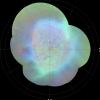
|
-
PIA00423:
-
Triton's Southern Hemisphere
Full Resolution:
TIFF
(7.96 MB)
JPEG
(413.4 kB)
|

|
1998-06-04 |
Triton
|
Voyager
|
|
1300x1280x3 |
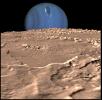
|
-
PIA00344:
-
Neptune on Triton's Horizon
Full Resolution:
TIFF
(2.164 MB)
JPEG
(143.2 kB)
|

|
1998-06-04 |
Triton
|
Voyager
|
|
3000x3000x3 |
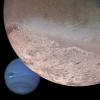
|
-
PIA00340:
-
Montage of Neptune and Triton
Full Resolution:
TIFF
(20.19 MB)
JPEG
(1.243 MB)
|

|
1998-06-04 |
Triton
|
Voyager
|
|
1910x1268x3 |
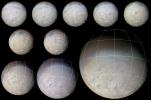
|
-
PIA00329:
-
Color Sequence of Triton Approach Images
Full Resolution:
TIFF
(3.767 MB)
JPEG
(313.5 kB)
|

|
1998-06-04 |
Triton
|
Voyager
|
|
4500x3500x3 |
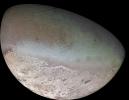
|
-
PIA00317:
-
Global Color Mosaic of Triton
Full Resolution:
TIFF
(29.1 MB)
JPEG
(2.06 MB)
|

|
1998-01-08 |
Neptune
|
Voyager
|
VG ISS - Narrow Angle
|
1000x1000x3 |
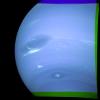
|
-
PIA00049:
-
Neptune - Great Dark Spot, Scooter, Dark Spot 2
Full Resolution:
TIFF
(1.461 MB)
JPEG
(55.96 kB)
|

|
1998-01-08 |
Neptune
|
Voyager
|
VG ISS - Narrow Angle
|
945x870x3 |
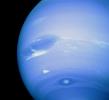
|
-
PIA01142:
-
Neptune Scooter
Full Resolution:
TIFF
(1.084 MB)
JPEG
(59.82 kB)
|

|
1997-01-15 |
|
|
|
1930x2440x3 |

|
-
PIA00545:
-
Solar System Montage
Full Resolution:
TIFF
(9.644 MB)
JPEG
(250.5 kB)
|

|
1996-09-26 |
Triton
|
Voyager
|
VG ISS - Narrow Angle
|
923x264x3 |

|
-
PIA00060:
-
Triton - False Color of 'Cantaloupe' Terrain
Full Resolution:
TIFF
(534.9 kB)
JPEG
(25.07 kB)
|

|
1996-09-26 |
Triton
|
Voyager
|
VG ISS - Narrow Angle
|
800x795x1 |
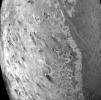
|
-
PIA00059:
-
Triton South Polar Terrain
Full Resolution:
TIFF
(496.4 kB)
JPEG
(101.5 kB)
|

|
1996-09-26 |
Triton
|
Voyager
|
VG ISS - Narrow Angle
|
326x471x1 |

|
-
PIA00056:
-
Triton - Detail of Dark and Light Material
Full Resolution:
TIFF
(75.02 kB)
JPEG
(14.41 kB)
|

|
1996-09-13 |
Earth
|
Voyager
|
VG ISS - Narrow Angle
|
620x500x3 |
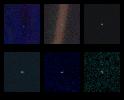
|
-
PIA00453:
-
Solar System Portrait - Views of 6 Planets
Full Resolution:
TIFF
(530.3 kB)
JPEG
(33.82 kB)
|

|
1996-09-13 |
Sol (our sun)
|
Voyager
|
VG ISS - Wide Angle
|
4000x1200x3 |

|
-
PIA00451:
-
Solar System Portrait - 60 Frame Mosaic
Full Resolution:
TIFF
(1.124 MB)
JPEG
(166.4 kB)
|

|
1996-01-29 |
Uranus
|
Voyager
|
VG ISS - Wide Angle
|
794x960x3 |

|
-
PIA00143:
-
Uranus - Final Image
Full Resolution:
TIFF
(788.1 kB)
JPEG
(21.25 kB)
|

|
1996-01-29 |
Neptune
|
Voyager
|
VG ISS - Wide Angle
|
844x732x3 |
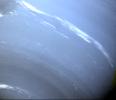
|
-
PIA00063:
-
Neptune - True Color of Clouds
Full Resolution:
TIFF
(1.472 MB)
JPEG
(56.9 kB)
|

|
1996-01-29 |
Neptune
|
Voyager
|
|
682x596x3 |
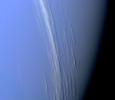
|
-
PIA00058:
-
Neptune Clouds Showing Vertical Relief
Full Resolution:
TIFF
(892.5 kB)
JPEG
(22.54 kB)
|

|
1996-01-29 |
Neptune
|
Voyager
|
|
780x780x3 |
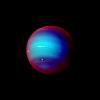
|
-
PIA00057:
-
Neptune False Color Image of Haze
Full Resolution:
TIFF
(267.8 kB)
JPEG
(25.29 kB)
|

|
1996-01-29 |
Neptune
|
Voyager
|
VG ISS - Wide Angle
|
650x650x3 |
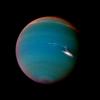
|
-
PIA00051:
-
Neptune in False Color
Full Resolution:
TIFF
(352 kB)
JPEG
(20.01 kB)
|

|
1996-01-29 |
Neptune
|
Voyager
|
VG ISS - Narrow Angle
|
884x698x3 |
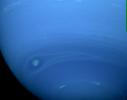
|
-
PIA00050:
-
Neptune's Southern Hemisphere
Full Resolution:
TIFF
(931.2 kB)
JPEG
(35.2 kB)
|

|
1996-01-29 |
Neptune
|
Voyager
|
VG ISS - Narrow Angle
|
1200x1297x3 |

|
-
PIA00048:
-
Neptune - Great Dark Spot and Scooter
Full Resolution:
TIFF
(1.924 MB)
JPEG
(55.04 kB)
|

|
1996-01-29 |
Neptune
|
Voyager
|
VG ISS - Narrow Angle
|
1000x1000x3 |
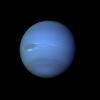
|
-
PIA00046:
-
Neptune Full Disk
Full Resolution:
TIFF
(814.1 kB)
JPEG
(32.49 kB)
|

|
1996-01-29 |
Neptune
|
Voyager
|
VG ISS - Narrow Angle
|
934x722x1 |
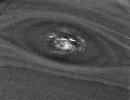
|
-
PIA00064:
-
Neptune's Dark Spot (D2) at High Resolution
Full Resolution:
TIFF
(499.8 kB)
JPEG
(135.7 kB)
|

|
1996-01-29 |
Triton
|
Voyager
|
|
1000x1000x1 |
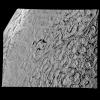
|
-
PIA00061:
-
Triton High Resolution View of Northern Hemisphere
Full Resolution:
TIFF
(565.5 kB)
JPEG
(131.8 kB)
|

|
1996-01-29 |
Neptune
|
Voyager
|
|
600x800x1 |

|
-
PIA00062:
-
1989N1 Surface Detail
Full Resolution:
TIFF
(70.54 kB)
JPEG
(12.6 kB)
|

|
1996-01-29 |
N Rings
|
Voyager
|
VG ISS - Wide Angle
|
785x1000x1 |

|
-
PIA00053:
-
Neptune Rings and 1989N2
Full Resolution:
TIFF
(156.9 kB)
JPEG
(117.3 kB)
|

|
1996-01-29 |
Nereid
|
Voyager
|
|
200x200x1 |
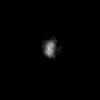
|
-
PIA00054:
-
Nereid
Full Resolution:
TIFF
(1.249 kB)
JPEG
(1.099 kB)
|

|
1996-01-29 |
Neptune
|
Voyager
|
|
330x330x1 |
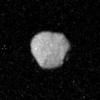
|
-
PIA00055:
-
1989N1
Full Resolution:
TIFF
(59.33 kB)
JPEG
(10.79 kB)
|

|
1996-01-29 |
Neptune
|
Voyager
|
|
430x465x1 |

|
-
PIA00047:
-
Neptune - Changes in Great Dark Spot
Full Resolution:
TIFF
(111.3 kB)
JPEG
(25.64 kB)
|

|
1996-01-29 |
Neptune
|
Voyager
|
VG ISS - Narrow Angle
|
400x970x1 |

|
-
PIA00045:
-
Neptune - Changes in Great Dark Spot
Full Resolution:
TIFF
(270.4 kB)
JPEG
(40.38 kB)
|

|
1989-10-27 |
Triton
|
Voyager
|
|
900x1558x1 |

|
-
PIA14449:
-
Triton's Volcanic Plumes
Full Resolution:
TIFF
(1.404 MB)
JPEG
(191.5 kB)
|

|
1989-10-02 |
Triton
|
Voyager
|
|
932x1884x1 |

|
-
PIA14448:
-
Triton's Dark Plume
Full Resolution:
TIFF
(1.758 MB)
JPEG
(206.8 kB)
|

 Planetary Data System
Planetary Data System

























































